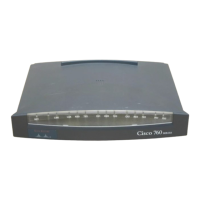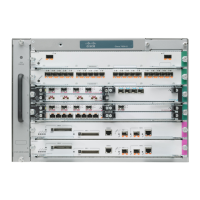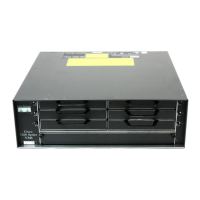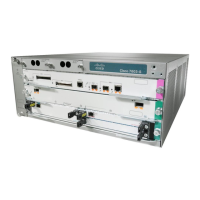Product Overview 1-17
Physical Description
• Sending and receiving routing protocol updates
• Managing tables and caches
• Monitoring interface and environmental status
• Providing Simple Network Management Protocol (SNMP) management and the console/Telnet
interface
The high-speed switching section of the RSP7000 communicates with and controls the interface
processors on the high-speed CxBus. This switching section decides the destination of a packet and
switches it accordingly. The RSP7000 uses a 16-million-instructions-per-second (mips) processor to
provide high-speed, autonomous switching and routing.
Memory Components
Figure 1-10 shows the various types of memory components on the RSP7000, and Table 1-4 lists the
functions of each type.
Figure 1-10 7000 Route Switch Processor (RSP7000)
Table 1-4 RSP7000 Memory Components
Type Size Quantity Description Location
DRAM 16 to 128 MB 2 to 4 8, 16, or 32-MB SIMMs (based on maximum DRAM required) Bank 0: U4 and U12
Bank 1: U18 and U25
NVRAM 128 KB 1 Nonvolatile EPROM for the system configuration file
1
1. A system configuration file is contained in NVRAM, which allows the software to control several system variables.
U17
Flash SIMM
Flash Card
8 MB
8, 16, and 20 MB
2
2. Only Intel Series 2 Flash memory cards can be used with the RSP7000.
1
Up to 2
Contains the Cisco IOS images on the RSP7000 (standard)
Contains the Cisco IOS images on up to two PCMCIA cards
U1
Slot 0, slot 1
Boot ROM 256 KB 1 EPROM for the ROM monitor program U24
H5364
CPU
Flash SIMM
holder
Console port
Auxiliary port
NVRAM
Flash card
(PCMCIA) slot
DRAM
SIMMs
ROM monitor
(boot ROM)
U1
U4
U12
U18
U25
U24
U17
Bus connector
Bank 0
Bank 1

